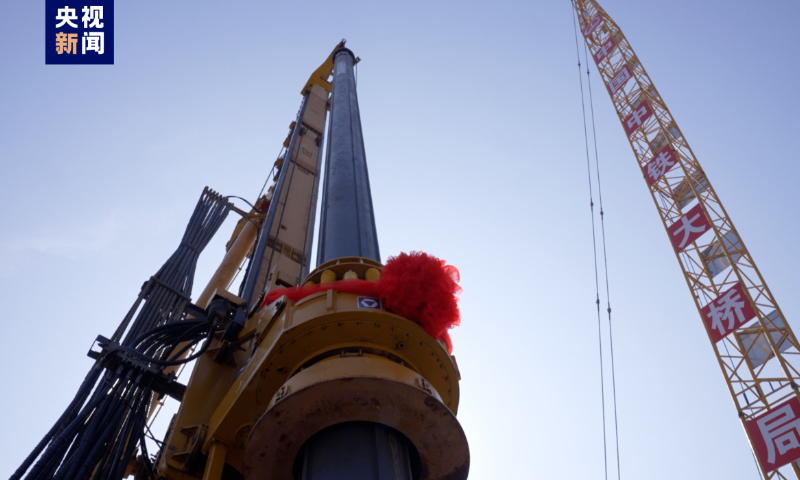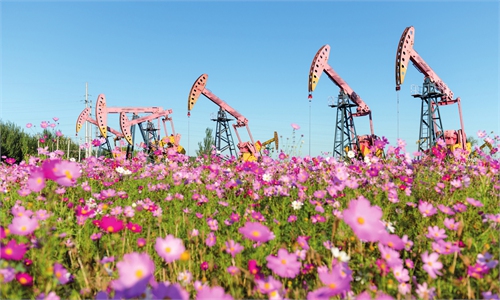Foundation drilling work starts for world's longest cross-sea high-speed railway bridge

Photo: Screenshot of CCTV News
Drilling work for the first pile foundation of the Hangzhou Bay cross-sea railway bridge started on Friday, marking the start of construction of the world's longest cross-sea high-speed railway bridge, in East China's Zhejiang Province.
The Hangzhou Bay cross-sea bridge is a key section of the Nantong-Ningbo high-speed railway. The bridge, with a total length of 29.16 kilometers, is designed to accommodate bullet trains running at 350 kilometers per hour.
To ensure a smooth ride for the bullet trains at that speed, the precision building of the bridge needs to be controlled to the millimeter level, according to a report by the Shanghai Securities News on Friday.
The bridge includes a 450-meter main span cable-stayed section, which is the world's longest to be fitted with ballastless track.
The construction faces various challenges. Hanghzou Bay has one of the strongest tidal forces in the world and the bridge construction is also influenced by hydrological, meteorological and geological conditions. Ecological protection is another factor, according to China Communications Construction Co, one of the contractors in the project.
Once operational, the railway is expected to shorten the travel time between major cities of the core area of the Yangtze River Delta region, optimize the high-speed railway network in the region and improve the country's transportation network.
The Nantong-Ningbo high-speed railway is a key part of the "eight vertical and eight horizontal" system for China's high-speed railway network and a crucial link between city clusters of the Yangtze River Delta region.
A total of 301 kilometers of new high-speed rail will be constructed and construction of the railway, with 10 stations along its route, is expected to take five years.
Experts said the railway will play a role in boosting the region's high-quality integrated development and contribute to the complementary advantages of regional resources and comprehensive and coordinated development.
Global Times

